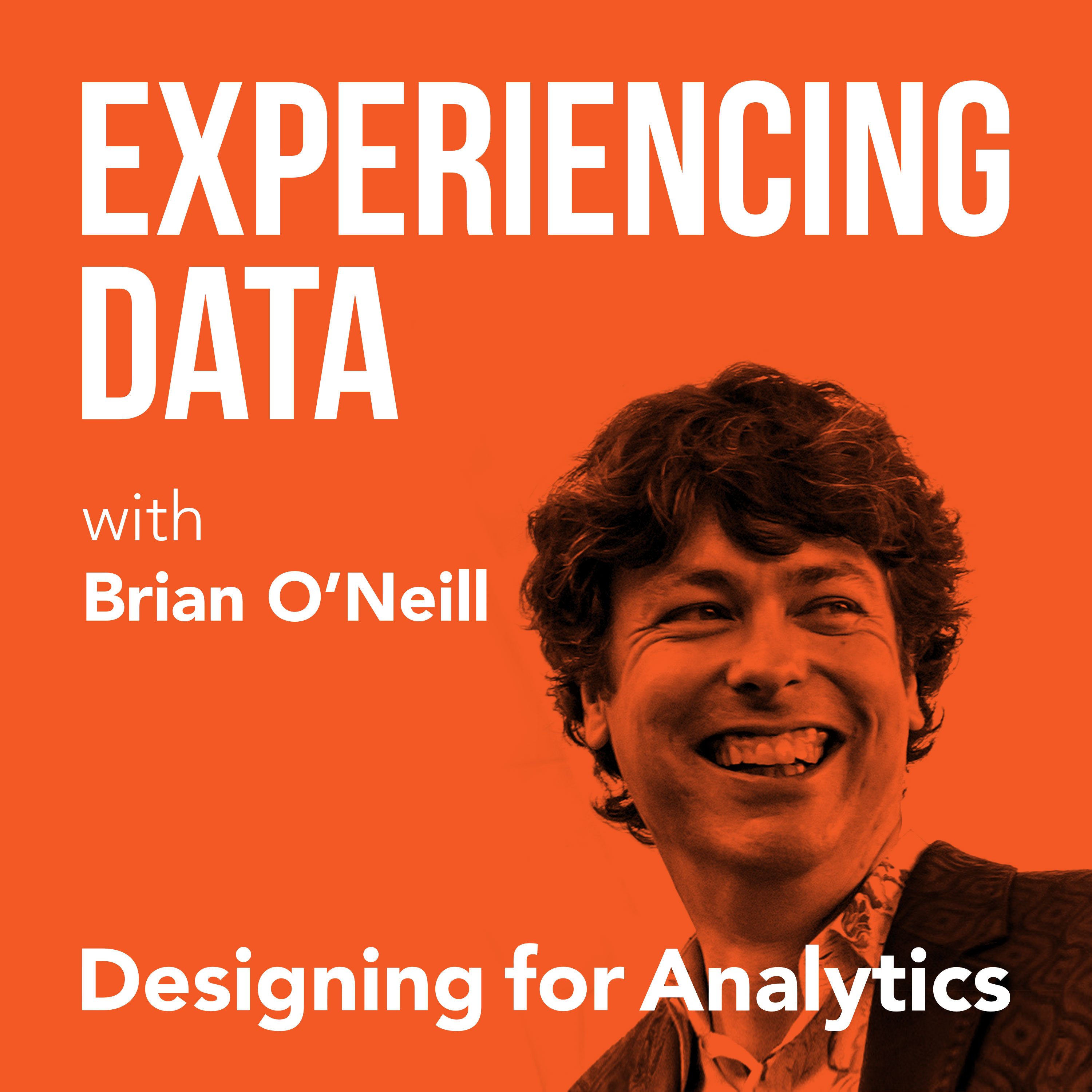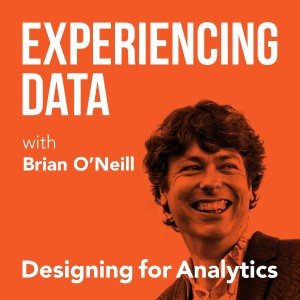

154.7K
Downloads
185
Episodes
Is the value of your enterprise analytics SAAS or AI product not obvious through it’s UI/UX? Got the data and ML models right...but user adoption of your dashboards and UI isn’t what you hoped it would be?
While it is easier than ever to create AI and analytics solutions from a technology perspective, do you find as a founder or product leader that getting users to use and buyers to buy seems harder than it should be?
If you lead an internal enterprise data team, have you heard that a ”data product” approach can help—but you’re concerned it’s all hype?
My name is Brian T. O’Neill, and on Experiencing Data—one of the top 2% of podcasts in the world—I share the stories of leaders who are leveraging product and UX design to make SAAS analytics, AI applications, and internal data products indispensable to their customers. After all, you can’t create business value with data if the humans in the loop can’t or won’t use your solutions.
Every 2 weeks, I release interviews with experts and impressive people I’ve met who are doing interesting work at the intersection of enterprise software product management, UX design, AI and analytics—work that you need to hear about and from whom I hope you can borrow strategies.
I also occasionally record solo episodes on applying UI/UX design strategies to data products—so you and your team can unlock financial value by making your users’ and customers’ lives better.
Hashtag: #ExperiencingData.
JOIN MY INSIGHTS LIST FOR 1-PAGE EPISODE SUMMARIES, TRANSCRIPTS, AND FREE UX STRATEGY TIPS
https://designingforanalytics.com/ed
ABOUT THE HOST, BRIAN T. O’NEILL:
https://designingforanalytics.com/bio/
Episodes

Tuesday Apr 18, 2023
Tuesday Apr 18, 2023
Today I’m chatting with Osian Jones, Head of Product for the Data Platform at Stuart. Osian describes how impact and ROI can be difficult metrics to measure in a data platform, and how the team at Stuart has sought to answer this challenge. He also reveals how user experience is intrinsically linked to adoption and the technical problems that data platforms seek to solve. Throughout our conversation, Osian shares a holistic overview of what it was like to design a data platform from scratch, the lessons he’s learned along the way, and the advice he’d give to other data product managers taking on similar projects.
Highlights/ Skip to:
- Osian describes his role at Stuart (01:36)
- Brian and Osian explore the importance of creating an intentional user experience strategy (04:29)
- Osian explains how having a clear mission enables him to create parameters to measure product success (11:44)
- How Stuart developed the KPIs for their data platform (17:09)
- Osian gives his take on the pros and cons of how data departments are handled in regards to company oversight (21:23)
- Brian and Osian discuss how vital it is to listen to your end users rather than relying on analytics alone to measure adoption (26:50)
- Osian reveals how he and his team went about designing their platform (31:33)
- What Osian learned from building out the platform and what he would change if he had to tackle a data product like this all over again (36:34)
Quotes from Today’s Episode
- “Analytics has been treated very much as a technical problem, and very much so on the data platform side, which is more on the infrastructure and the tooling to enable analytics to take place. And so, viewing that purely as a technical problem left us at odds in a way, compared to [teams that had] a product leader, where the user was the focus [and] the user experience was very much driving a lot of what was roadmap.” — Osian Jones (03:15)
- “Whenever we get this question of what’s the impact? What’s the value? How does it impact our company top line? How does it impact our company OKRs? This is when we start to panic sometimes, as data platform leaders because that’s an answer that’s really challenging for us, simply because we are mostly enablers for analytics teams who are themselves enablers. It’s almost like there’s two different degrees away from the direct impact that your team can have.” — Osian Jones (12:45)
- “We have to start with a very clear mission. And our mission is to empower everyone to make the best data-driven decisions as fast as possible. And so, hidden within there, that’s a function of reducing time to insight, it’s also about maximizing trust and obviously minimizing costs.” — Osian Jones (13:48)
- “We can track [metrics like reliability, incidents, time to resolution, etc.], but also there is a perception aspect to that as well. We can’t underestimate the importance of listening to our users and qualitative data.” — Osian Jones (30:16)
- “These were questions that I felt that I naturally had to ask myself as a product manager. … Understanding who our users are, what they are trying to do with data and what is the current state of our data platform—so those were the three main things that I really wanted to get to the heart of, and connecting those three things together.” – Osian Jones (35:29)
- “The advice that I would give to anyone who is taking on the role of a leader of a data platform or a similar role is, you can easily get overwhelmed by just so many different use cases. And so, I would really encourage [leaders] to avoid that.” – Osian Jones (37:57)
- “Really look at your data platform from an end-user perspective and almost think of it as if you were to put the data platform on a supermarket shelf, what would that look like? And so, for each of the different components, how would you market that in a single one-liner in terms of what can this do for me?” – Osian Jones (39:22)
Links
- Stuart: https://stuart.com/
- Article on IIA: https://iianalytics.com/community/blog/how-to-build-a-data-platform-as-a-product-a-retrospective
- Experiencing Data Episode 80 with Doug Hubbard: https://designingforanalytics.com/resources/episodes/080-how-to-measure-the-impact-of-data-productsand-anything-else-with-forecasting-and-measurement-expert-doug-hubbard/
- LinkedIn: https://www.linkedin.com/in/osianllwydjones/
- Medium: https://medium.com/@osianllwyd
No comments yet. Be the first to say something!